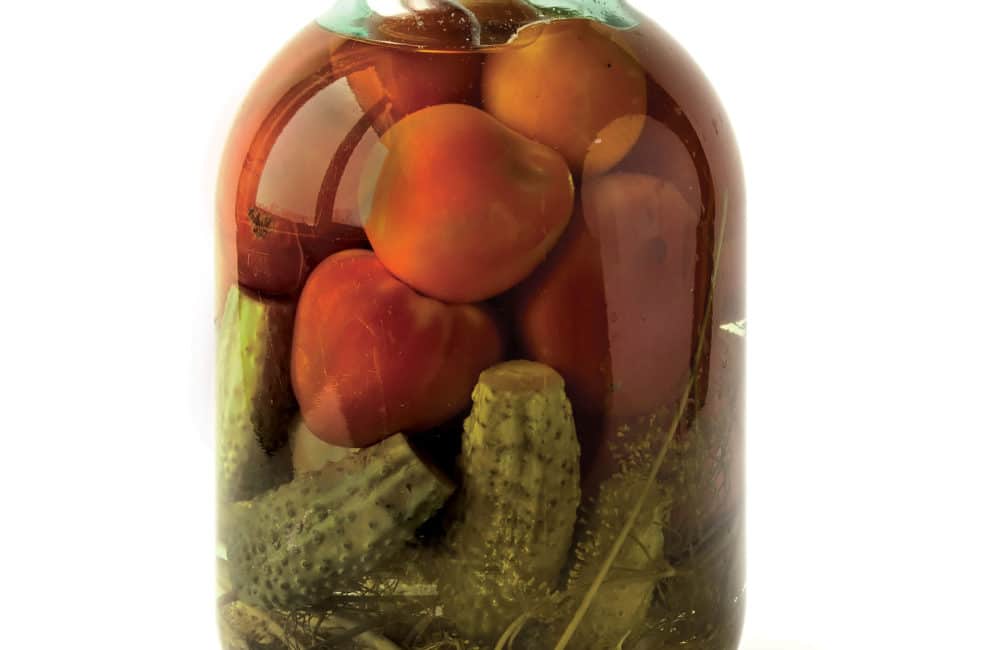The 10 Commandments Of Canning

For some, canning is a religion. But converts should know it’s also a science. Follow these stone-clad rules, and you too can safely preserve foods in your own home.
1. Do your homework
Look around to see if there are any canning classes in your area. Fall Creek Gardens in Indianapolis partners with local organizations to offer hands-on canning instruction. Also check out online resources like the USDA’s National Center for Home Food Preservation’s comprehensive website.
2. Take inventory
The must-have list: a large pot wide enough to fit several jars across and tall enough to cover your jars by at least two inches; a rack that fits in the bottom of the pot (so jars don’t sit directly on the heat source); rubberized tongs or jar lifter; heat-tempered jars (Ball jars are the most widely available and affordable); and a kitchen timer.
3. Start simple
Don’t tackle 100 pounds of tomatoes right off the bat. A quick, simple raspberry jam requires no peeling or seeding, and you can focus all of your mental energy on the canning part.
4. Preserve what’s in season
That means strawberries in early summer, cucumbers in June and July, and tomatoes July through early October. Produce harvested close to home at the optimal time of year will always taste better than something grown 2,000 miles away, picked before it’s ripe, and trucked in on an 18-wheeler.
5. Stay fresh
Can your product as quickly as possible after getting it at the farmers market or pulling it from the garden. Once food is harvested, it starts to degrade immediately. Canning old produce won’t make it better.
6. Focus
Multitasking during a canning project is a rookie mistake. Strict attention to detail is important, from the simmering time for jam to the boiling time for jars. The timing varies with each recipe, so read instructions carefully, and don’t get distracted once you begin.
7. Follow tested recipes from a trusted source
Don’t freestyle, especially when you’re starting out. The right mix of ingredients in the jar and proper amount of time in the canning pot are what make the product safe to eat, not to mention delicious.
8. Better safe than sorry
If you open something you canned and it looks or smells irregular, it probably is. Suspicious colors or scents may be signs of harmful bacteria that can make you sick. Is your pickle jar suddenly cloudy? Do you spot some mold in your jam? Don’t taste it to be sure. Get rid of it.
9. Beware the risk of botulism
Unlike other, less serious bacteria, molds, or yeasts, botulism is invisible to the eye and doesn’t smell. It can also be fatal. Here’s the good news: Botulism can’t survive in high-acid environments, including all fruit jams and pickled products. For everything else, including canned meats, fish, and non-pickled vegetables, a pressure canner is required, with its own set of rules. The bottom line: If you follow tested recipes, use the right equipment, and are diligent about canning protocol, botulism is easily avoidable.
10. Get creative with your finished product
Use your jam as the filling in thumbprint cookies, or as flavor swirls in homemade popsicles. Dice your pickles and stir them into mayonnaise for a tangy sandwich spread. Don’t be afraid to let your Pinterest flag fly.
Suzanne Krowiak is a Master Food Preserver, canning teacher, and founder of the Indy Food Swap.





